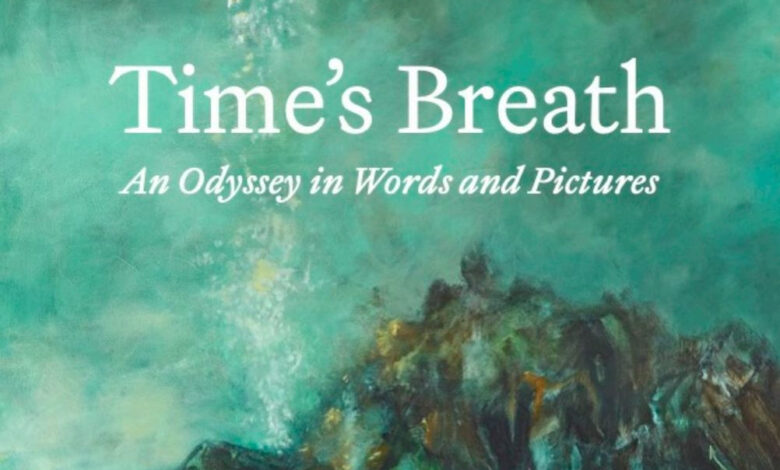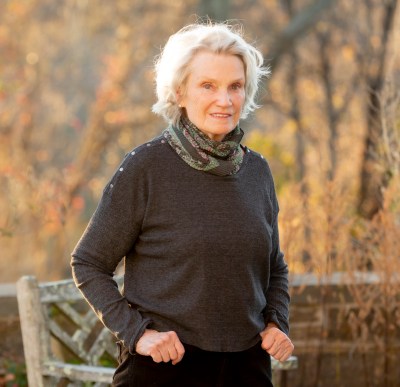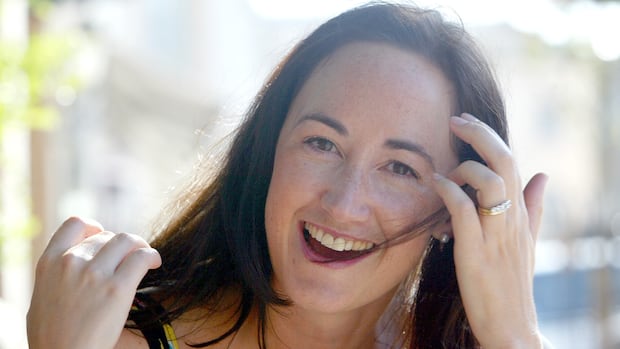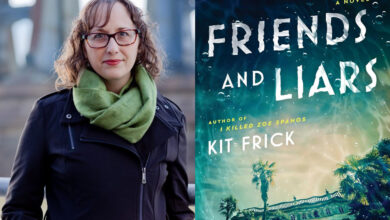Baltimore Fishbowl | An Oasis of Imagination: Q&A with Deb English, author of “Time’s Breath” –

I felt like I was reading a newly discovered mythological text when I opened the cover to Deborah Brown English’s Time’s Breath: An Odyssey in Words and Pictures. From the alluring (and fictional) preface, to the stunning artwork, to the mix of old English culture with a fantasy volcanic island off Scandinavia, I was captivated. This book is part creation myth, part colonial exploits misfired, and part love story. I found it an oasis of imagination and could not put it down. Every page is a visual feast.
Deborah Brown English grew up on a dairy farm on Maryland’s Upper Eastern Shore. Both a visual artists and a writer, she graduated from MICA with a degree in painting in 1985. She has served on the boards of both the Baltimore Ballet and Meals on Wheels of Central Maryland.
I was delighted to catch up with English by email to discuss her book; details of her Baltimore launch event follow.

Please tell us about your interest in myths.
I’ve been interested in mythology for as long as I can remember. I was introduced to children’s versions of the Greek Myths by my parents, who read watered down versions to me when I was young. An early book I read to myself was one of those books. I was required to read the myths again in high school—the Iliad and the Odyssey, specifically. We studied the moral nature of the major characters. These stories spoke a truth that does not appear in other genres. I loved how the characters seemed larger than their humanity should have allowed.
In English class, we spent a semester studying T.S. Eliot. I learned that language is a kind of magic.
These genres often address common truths about fate and human nature, especially when they meet up with each other. It makes a nice stew.
Can you share some of your educational journey?
As a teen, I took photography seriously, though I was self-taught. I won one of four national prizes when I was a member of the 4-H Club.
I started at Southern Methodist University (SMU) but did not finish my degree. The math and science requirements were more than I could stomach, so I spent my years studying creative writing and literature—specifically German literature and some Spanish. I particularly liked German, though grammatically, it’s very difficult. The language is pure and literal. An easy example is Krankenhaus, which literally means, ‘sick house’, or ‘hospital’. I read a little German philosophy, poetry, and several novels.
I had a year of Chaucer and a wonderful semester on Russian literature. I took all the creative writing allowed, which was two semesters. I loved the required two-year program entitled “The Nature of Man,” essentially the history of Western Philosophy. I can’t remember many details, but love of the multilayered complexities remains. I also studied Abnormal Psychology which is titillatingly fascinating. We studied Freud and Jung, getting into some philosophy that showed up later when I went to art school.
All this formed my lifelong interest in language and the essence of meaning hidden, as well as evidenced, in the structure of the words.
What about art school?
I was married and already had a child. I thought I’d write while she napped. That was the beginning of a twenty-year long period of writer’s block. I started doing needlework. I toyed with the idea of making kits with designs, things that hobbyists might buy. It came quickly: I needed drawing and design lessons.
My husband Phil took a job in Baltimore. The household (which by then had acquired a little boy and a devilish Springer Spaniel) moved to Baltimore. After we settled, I decided to look into classes for my needlework. Phil, typically, insisted I apply to the Maryland Institute College of Art. I called the Institute and said something like, “You don’t want me, but my husband insisted.” They said something like, “Let us decide.”
So, I went to Portfolio Day. I was thirty-two, a housewife holding a grocery bag of things I’d made for the kids, and a single beaten-up sketch book. My competitors were gangly eighteen-year-olds with big black portfolios, black clothes, and permanent, “Too cool” scowls.
A nice woman, not much older than me, looked through my offerings. “You don’t know how to draw. You certainly don’t know how to paint and yes, you’re right that you need design classes. You are provisionally accepted.”
I nearly fell over.
Later, I learned that the school was looking for people with Liberal Arts backgrounds to help elevate the level of discourse in the classes. I enrolled part time and was able to arrange a limited schedule with the professors of my choice.
These professors were extremely supportive, and I’ll always be grateful. It took five years, but I graduated cum laude. Barry Nemette, who wrote a blurb for Time’s Breath, and James Hennessey, were two of these kind teachers. A third was Ray Allen, who became Academic Dean in my last year. All three were experts in Abstraction and Color Theory.
I had fallen in love with painting and was more interested in figuration than abstraction, but it didn’t matter. We were encouraged to try everything. In the drawing classroom, Barry introduced us to Automatic Drawing, where we learned about the importance of rhythm in mark-making. Barry also invited visiting scholars to our classes, some of whom gave us critiques. We had TONS AND TONS of homework for all classes.
Barry arranged for me to have a studio in the Fox Building. It was a blissful senior year.
I took six courses in Art History from Ancient Art to Art of the Orient, to German Expressionism. Wow.
Tell us about the research for the book—including climate, boating, dialect, geology, birds, England, Scandinavia.
Most of my research was on the internet. A character would say, need, want, or do something and I often looked to make sure I wasn’t going too far off track. I was looking for plausibility.
The research was fun. Pretending to be Cailleach creating a landscape, and all the details she had to manage—that was great.
An overarching theme in this book is time. Could you please talk about that?
Time became a character for me. That happened unintentionally. I think my response was intuitive more than intellectual. The gist is: Thomas’ readings made him sensitive to signals from the universe and he was not afraid to acknowledge them. Later, Ismitta felt herself sensitive to Time’s taunts.
Ironically, time hasn’t played a role in my artwork, with one possible exception. A lot of my gallery work was of figures in domestic scenes at the moment something happened. These are paintings about an instant. My experience with photography played a part. I call these paintings “something that I saw on my way to answer the phone.”
*
Launch Event for Time’s Breath
September 18, 6 PM
Ivy Bookshop, 5928 Falls Road
Deborah Brown English in conversation with Martha Anne Toll
Related
Source link



